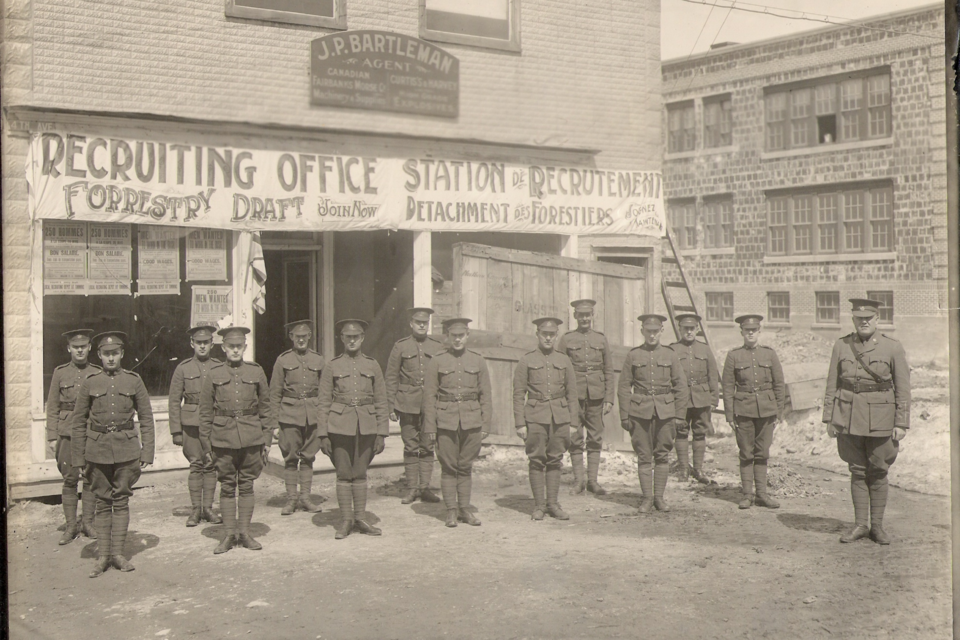The impact of the war was immediately felt the morning the war broke out. Men looked for the next thrill and adventure and joined up by the dozens.
Six hundred young men went to the trenches from Timmins. These men were mostly young and newly working rather than experienced professionals. The Porcupine Advance listed 100 men who joined the Pioneer Regiment’s 2nd Battalion and only six were identified professionals and merchants.
The men from the Porcupine Camp could sign up in the Canadian Expeditionary Forces at J.P. Bartleman’s shop, which served as their local recruiting bureau. The building was located in what is now the city hall parking lot on the corner of Cedar Street and Algonquin.
Many of the first to enlist ended up in 58th Infantry Battalion. Many miners who enlisted became overseas engineers or sappers. The 2nd Battalion, the Canadian Pioneers, called for miners familiar with tunnel construction; therefore, miners were extensively used along the front for their underground skills which became handy when digging tunnels was needed. They took on some of the most dangerous jobs which required long tiring days in the soil. One of their main jobs was to lay explosive chargers under enemy territory to provide hidden access routes to the front lines under the battlefields of France.
After the news broke of war again in Europe in 1939, men and women from the area were pressed into service on both the battlefield or on the home front. About one-third of all miners served overseas and over 4,300 First Nations soldiers as well as many Inuit and Métis peoples in Canada joined the military in the Second World War. All the mines contributed to the war. On top of produced gold, Hollinger mined scheelite as well. The Dome Mine made parts and equipment for pumps in cargo vessels. Some companies like Preston East Dome, matched employee donations to the Red Cross and war charities. The mines paid a war bonus of 21 cents a shift.
The Porcupine had adopted its own bomber squadron called the Porcupine Squadron. No. 433. It was a heavy-bomber unit of No. 6 RCAF Group at Skipton-on-Swale in Yorkshire, England. Their motto was, “Qui s'y frotte s'y pique.”
The Timmins Museum: National Exhibition Centre regularly provides TimminsToday readers with a glimpse of the city’s past.
Find out more of what the Timmins museum has to offer here and read more Remember This columns here.



